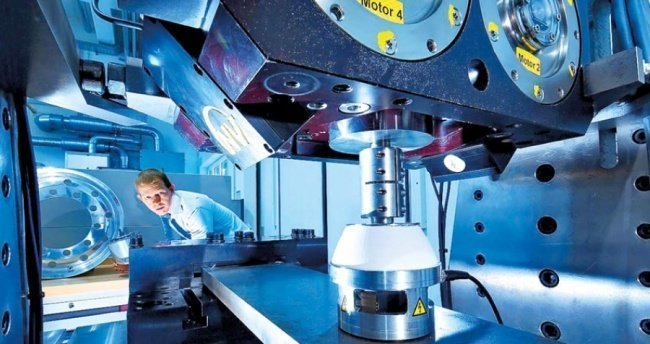Key Trends For Growth In Southeast Asia
With 2017 looking to be a year of steady manufacturing growth for Southeast Asia, machine tool makers that form the backbone of most industry development would do well to take notice. By Jonathan Chou
Machine tools are part and parcel of manufacturing, particularly in segments such as automobiles, aerospace, defence, and railways. The machine tool market is thus closely linked with the ups and downs of each specific industry.
With the Nikkei ASEAN Manufacturing Purchasing Managers’ Index (PMI) showing Southeast Asia ticking upwards to 50 in January this year as compared to 49.4 in December 2016, machine tool makers could benefit from identifying upcoming growth areas in the region.
Economy Boosted By Manufacturing: Singapore
Singapore was estimated to consume approximately US$310 million in machine tools in 2016, according to Gardner. This represents a substantial amount of spending, and even with its small geographic size, the country is projected to be the 14th top market worldwide for metalworking equipment in 2016-2017, as said by the International Trade Administration.
The country’s gross domestic product growth rate performed above expectations, expanding by 2.9 percent year-on-year in the last three months of 2016, higher than 1.2 percent in the previous period and above initial estimates of a 1.8 percent growth. It is the highest expansion since the third quarter of 2014 and was mainly boosted by manufacturing, according to figures by Trade Economics.
The Singapore economy mainly relies on purchasing of intermediate goods and exporting of high-value added products. Machinery and equipment take up 46 percent of total exports, and opportunities in the country are thus mainly focussed on the high-end precision engineering sector.
Indonesia Setting Sights On The Automotive Sector
The Indonesian government has identified vehicle manufacturing and assembly as a key industry for development in the next five years, in hopes to become Southeast Asia’s largest centre for vehicle assembly.
The nation also promoted local manufacturing of auto parts and components, with forging, casting, and stamping processes being the main areas to boost growth in production of assorted metal goods.
In 2016, Indonesia purchased a total of US$76.88 million worth of lathes and turning machines. As for machining centres, Indonesia imported a total of US$62.22 million during the same period, according to the Taiwan External Trade Development Council, which also added that Taiwan has remained one of the major suppliers of machine tools to the Indonesia market in the past five years.
With the government releasing economic policy packages designed to attract fresh investments and spur market activities (of which 14 had been released so far since September 2015), the automotive sector in Indonesia seems to be shaping up for growth.
Improving Investor Climate: Vietnam
For the past few years, Vietnam has been emerging as an attractive foreign investment destination. Manufacturing and high-tech industries constitute a fast growing part of the economy, and the country is also one of the largest oil producers in the region.
According to the German Embassy in Hanoi, many major German companies, which are operating in various fields such as automobile, energy and industrial machinery in Vietnam, plan to expand their presence in Vietnam to take advantage of the improved investment climate and signed free trade agreements.
This includes companies such as Marquardt Group which arrived in Da Nang to discuss with municipal authorities on the production of high-tech automobile equipment and components. The project would have an estimated investment of about US$39 to 50 million and generate jobs for some 500 to 600 local workers.
Promising Signs
The global machine tools market is predicted to exceed US$120 billion by 2020, growing at a compound annual growth rate of more than six percent and a large portion of this growth will take place in Asia, according to Technavio.
Anju Ajaykumar, lead analyst at Technavio for tools and components research observed that industrial sectors such as automotive, industrial machinery as well as aerospace and defence are showing “signs of positive growth which will augur well for the growth of the machine tools market during the forecast period (2016-2020).”
The promising signs of manufacturing growth in Southeast Asia this year could very well indicate an associated uptick in orders and purchases in the machine tools sector as well.
CHECK OUT THESE OTHER ARTICLES
● PLM To Revolutionize Complex Processes Of Discrete Industries
● Universal Robots Future-Proofs Production Processes In Southeast Asia With Collaborative Robots
● Flexibility In The Form Of Automation
● HEIDENHAIN Presents Controls And Measuring Technology For Efficient Production
● Dyson Terminates Electric Car Project In Singapore
● Enterprise Artificial Intelligence Revenue Will Reach $107.3 Billion Worldwide By 2025
● Metal Powder Market Forecast To Grow At 3% CAGR Over 2018 to 2028
● A Look at Walter’s Two-in-One Machining Concept
● One Technology—Many Benefits
● TÜV SÜD And thyssenkrupp Innovations Sign MoU To Develop Additive-Manufacturing-Enabled Eolutions In APAC
WANT MORE INSIDER NEWS? SUBSCRIBE TO OUR DIGITAL MAGAZINE NOW!
FOLLOW US ON: LinkedIn, Facebook, Twitter















